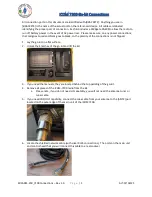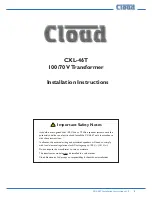
USER MANUAL
TCM 515Z – 2.4 GHZ IEEE 802.15.4 Transceiver
© 2017 EnOcean | www.enocean.com
F-710-017, V1.0
TCM 515Z User Manual | v1.6 | September 2017 | Page 24/46
5
APPLICATION INFORMATION
5.1
Transmission range
The main factors that influence the system transmission range are:
-
Type and location of the antennas of receiver and transmitter
-
Type of terrain and degree of obstruction of the link path
-
Sources of interference affecting the receiver
-
“Dead spots” caused by signal reflections from nearby conductive objects.
Since the expected transmission range strongly depends on this system conditions, range
tests should always be performed to determine the reliably achievable range under the giv-
en conditions.
The following figures should be treated as a rough guide only:
-
Line-of-sight connections
Typically 15 m range in corridors, up to 50 m in halls
-
Plasterboard walls / dry wood
Typically 15 m range, through max. 2 walls
-
Ferro concrete walls / ceilings
Maximum 1 wall or ceiling, depending on thickness and material
-
Fire-safety walls, elevator shafts, staircases and similar areas should be considered
as shielded
The angle at which the transmitted signal hits the wall is very important. The effective wall
thickness – and with it the signal attenuation – varies according to this angle. Signals
should be transmitted as directly as possible through the wall. Wall niches should be avoid-
ed.
Other factors restricting transmission range include:
-
Switch mounting on metal surfaces (up to 30% loss of transmission range)
-
Hollow lightweight walls filled with insulating wool on metal foil
-
False ceilings with panels of metal or carbon fibre
-
Lead glass or glass with metal coating, steel furniture
The distance between the receiver and other transmitting devices such as computers, audio
and video equipment that also emit high-frequency signals should be at least 0.5 m.
















































